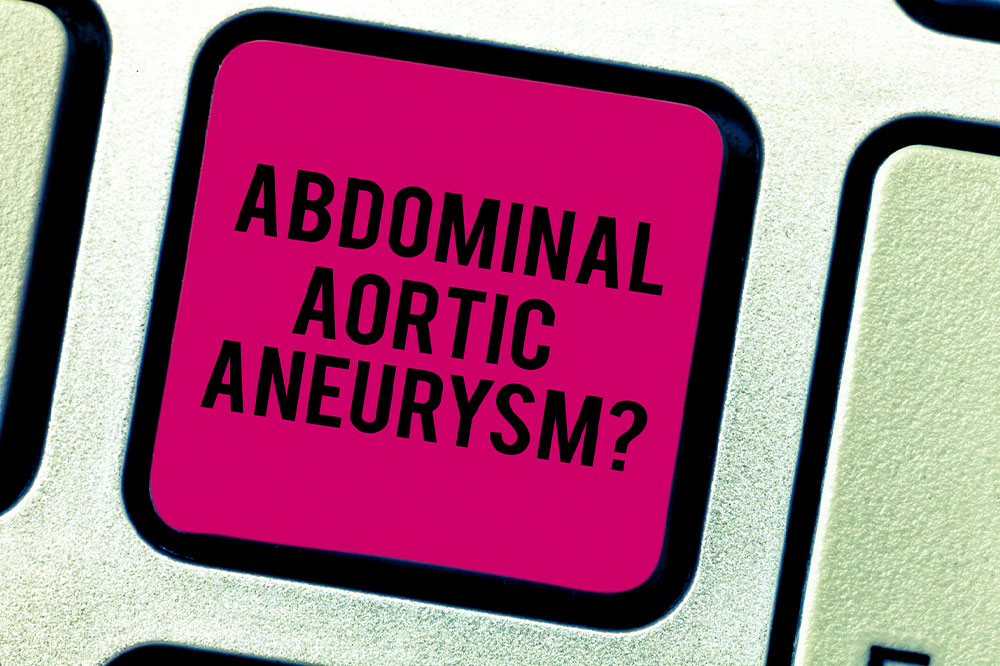
Abdominal aortic aneurysms – Causes, symptoms, risk factors, and more
An abdominal aortic aneurysm (AAA) occurs when the wall of the aorta, a large artery that transports blood from the heart to the rest of the body, is damaged. As the wall weakens, the diameter of the aorta increases and can eventually burst. A ruptured AAA is fatal in most cases. Most aneurysms don’t cause any symptoms until they burst. Therefore, it’s essential to know the signs of an AAA and get checked if you have any concerns.
What are Abdominal Aortic Aneurysms?
Abdominal aortic aneurysms (AAA) are a type of heart disease that can occur in the abdominal area. They’re also known as thoracic aortic aneurysms, the most common type of aortic aneurysm.
What causes the aneurysms?
Abdominal aortic aneurysms are a type of cardiovascular disease that can occur due to many different factors. However, the most common cause is atherosclerosis, the build-up of cholesterol and other fatty substances in the arteries. It can lead to the formation of an AAA, a weakened section of your aorta. There’s always the risk that an AAA will rupture and cause serious complications.
Who is at risk for developing the condition?
Several factors can raise the risk of developing an abdominal aortic aneurysm. These include high blood pressure, infection, trauma, atherosclerosis (hardening of the arteries), older adults, and family history.
Men are also at greater risk than women. If you have any of these risk factors, it’s essential to be aware of the signs and symptoms of an abdominal aortic aneurysm so that you can seek treatment if necessary.
What are the symptoms of Abdominal Aortic Aneurysms?
The main symptom of AAA is chest pain, which may be severe enough to cause you to faint or collapse. Other symptoms may include:
- Shortness of breath
- Weakness
- Sweating
- Rapid heart rate
- Severe pain in the abdomen or back
- A feeling of pulsing or throbbing in the abdomen
- Nausea and vomiting
- Lightheadedness or fainting
If you have any such signs or symptoms, you must get them checked out immediately. The sooner you diagnose and treat the condition, the better your chances are for a successful outcome.
How are Abdominal Aortic Aneurysms diagnosed?
To diagnose AAA, your doctor will undergo the following tests:
- Magnetic Resonance Imaging (MRI)
- Computerized Tomography (CT) Scan
- Chest X-ray
- Arteriogram
- Transesophageal echocardiogram (TEE)
The most common is an MRI, which can provide detailed images of the aorta and any potential aneurysms. CT scans and chest X-rays can also help diagnose an AAA, as they can show the size and location of the aneurysm. An arteriogram is another test that can be used to diagnose an AAA. This involves checking for any changes in blood vessels so they can be seen more clearly on an X-ray.
Finally, a transesophageal echocardiogram (TEE) is another test that may be used to diagnose the condition. This involves high-frequency sound waves into the esophagus that initiates a picture of your heart and aorta.
What are the effective treatment options?
The most common treatment option for abdominal aortic aneurysms is open surgery, which involves grafting (placing the graft) in the aorta. This procedure is usually done as an emergency measure when other treatments have failed or when the risk of rupture is high.
Endovascular surgery is another standard treatment option for AAAs and involves inserting the graft into a blood vessel outside the body. This approach has several advantages over open surgery: it’s less invasive, doesn’t require general anesthesia or overnight hospitalization, and has a lower risk of complications such as bleeding or organ failure.
Treatment for AAA typically involves several stages, and the goal is to prevent it from rupturing and causing further injury to your heart or other organs.




